
The river bed of the Tanjero River south of Said Sadiq town during the dry season on September 20, 2020. Photo: Hannah Lynch/Rudaw
SULAIMANI, Kurdistan Region — “Don’t go down to the river.”
The warning came from a young man who chased us halfway through a village built into the steep hillside where the Lesser Zab River forms the border with Iran, about 50 kilometres north of Sulaimani city. On a late summer morning, the river was little more than a small stream under the close gaze of Iranian border posts. The night before, border guards opened fire on a group by the river, including the man who came to warn us.
For the people living on the shores of the Lesser Zab and those of its sister to the south, the Sirwan, these waters are no longer their own. They have been stolen by dams built by Iran and poisoned by a lethal combination of pollution and mismanagement.
Along the lengths of these rivers, men and women told me about days gone past when the water flowed clean and strong, and was a source of life. They reminisced about the rivers that sustained them, giving them fish and irrigating their crops. Now, their water and way of life are disappearing.
A little downstream from where the man had warned us to stay clear, there is a rocky stretch of river that is out of sight of the Iranians. A group of men are here, fishing for sport.
The fish here “used to number more than the stones,” said one, with a small net tied to a green plastic bottle. He has been fishing in rivers all across the Kurdistan Region for more than 35 years. Every year, the river is lower and the fish fewer in number, he said.
As the men fish, the river begins to rise, fast and with no warning. Iran has released the water at its dam upstream. Within minutes, water that was knee-high has risen by half a metre. The fishermen on an outcropping of land will have to swim to get back to their cars. The river ebbs and flows at Iran’s command.
“The next world war will be fought over water” is an oft-repeated phrase that reverberates with urgency in the Middle East and North Africa, the most water-insecure region of the world. Twelve of the 17 most water-stressed countries are located here, according to the World Resources Institute. A controversial Nile River dam project has been the source of tensions between Egypt, Sudan, and Ethiopia for a decade, one that outgoing US President Donald Trump recently waded into in typically brash fashion, saying, “They [Egypt] will end up blowing up the dam.”
Iraq is the world’s fifth most vulnerable nation to the effects of climate change, including water and food insecurity, according to the United Nations. After years of conflict and mired in political and economic crises, it is also one of the least prepared to deal with the emergency.
Water resources and the climate crisis are not bound by international borders, but neighbouring Iran and Turkey are focused on national and nationalist solutions to secure water. Tehran is building a network of dams and canals and Ankara has constructed a mega-dam on the Tigris River, pushing forward on the project, even at the cost of the ancient city of Hasankeyf that is now under water. The governments in Erbil and Baghdad are not addressing the issue with the seriousness that the threat demands, much to the despair of the people who are watching their rivers disappear.
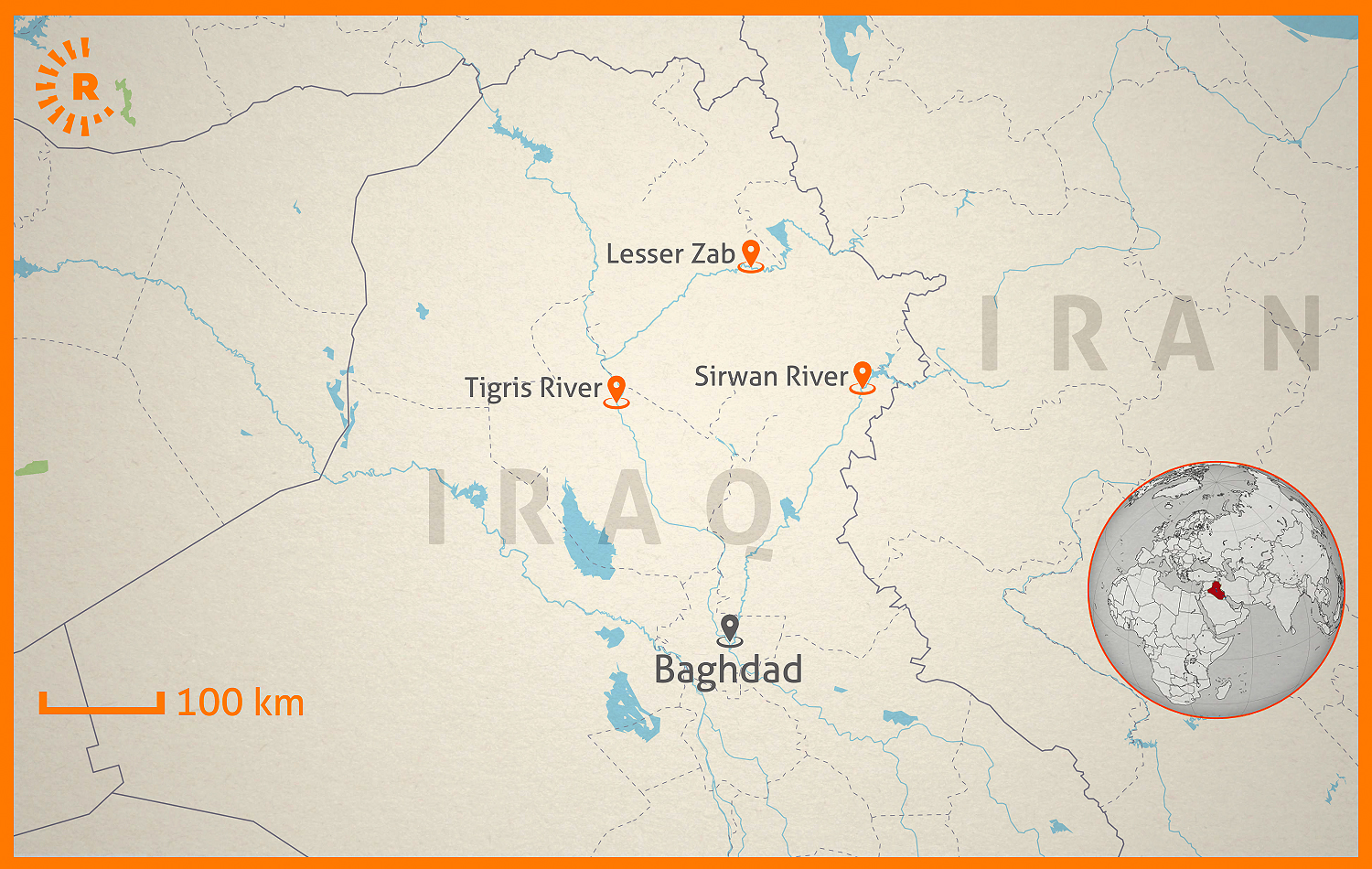
THE Lesser Zab and Sirwan Rivers wind through the rugged landscape of the Zagros Mountains, where layers of sediment that accumulated on an ancient sea floor are thrust into the sky in folds, opening hillsides up into caves that have sheltered generations of Kurdish freedom fighters.
The Lesser Zab, Zei Bchuk in Kurdish, originates in northwestern Iran’s Zagros Mountain range and follows a roughly 400-kilometre long course, marking a stretch of the international frontier before turning into the Kurdistan Region where it fills the Dukan reservoir, and eventually flows into the Tigris River.
The Sirwan River also has its source in northwestern Iran and follows a similar though slightly longer 450-kilometre long course to the south. It crosses the border into the Kurdistan Region near Halabja, feeds the Darbandikhan Lake, then turns southwest to meet with the Tigris. In Arabic it is called the Diyala.
“Both rivers have contributed in shaping the nowadays landscape through the past 2.5 million years, they carved very hard rocks forming deep gorges and having canyon-shaped river valleys,” explained Varoujan K. Sissakian, a geologist who worked with the Iraq Geological Survey for decades and is now at the University of Kurdistan-Hawler.
The rivers have also worn down rocks and collected sediment, “depositing them downstream as very fertile soil,” forming and irrigating plains that have fed the people, Sissakian wrote in a report detailing the devastating effect the loss of these rivers will have on the agriculture, industry, and people who depend on these waters.
References to the Lesser Zab are found in cuneiform inscriptions dating from more than 4,000 years ago, according to archaeologist Dlshad Zamua. The river was a transportation route, bringing products from the Zagros Mountains to Mesopotamia and the Assyrian capital of Ashur. Texts discovered in the ancient city of Idu reveal evidence of gazelles, barley, wheat, and fruit being loaded into boats to be sold downstream.
When the Sumerians and Babylonians needed logs to build their empires, they got them from the Zagros Mountains and transported them on the river. “They cut many trees, bound them together to make a kalak,” said Zamua. A kalak is a raft of sorts made by lashing logs together and floating them with the aid of inflated animal skins, usually goat, tied underneath.
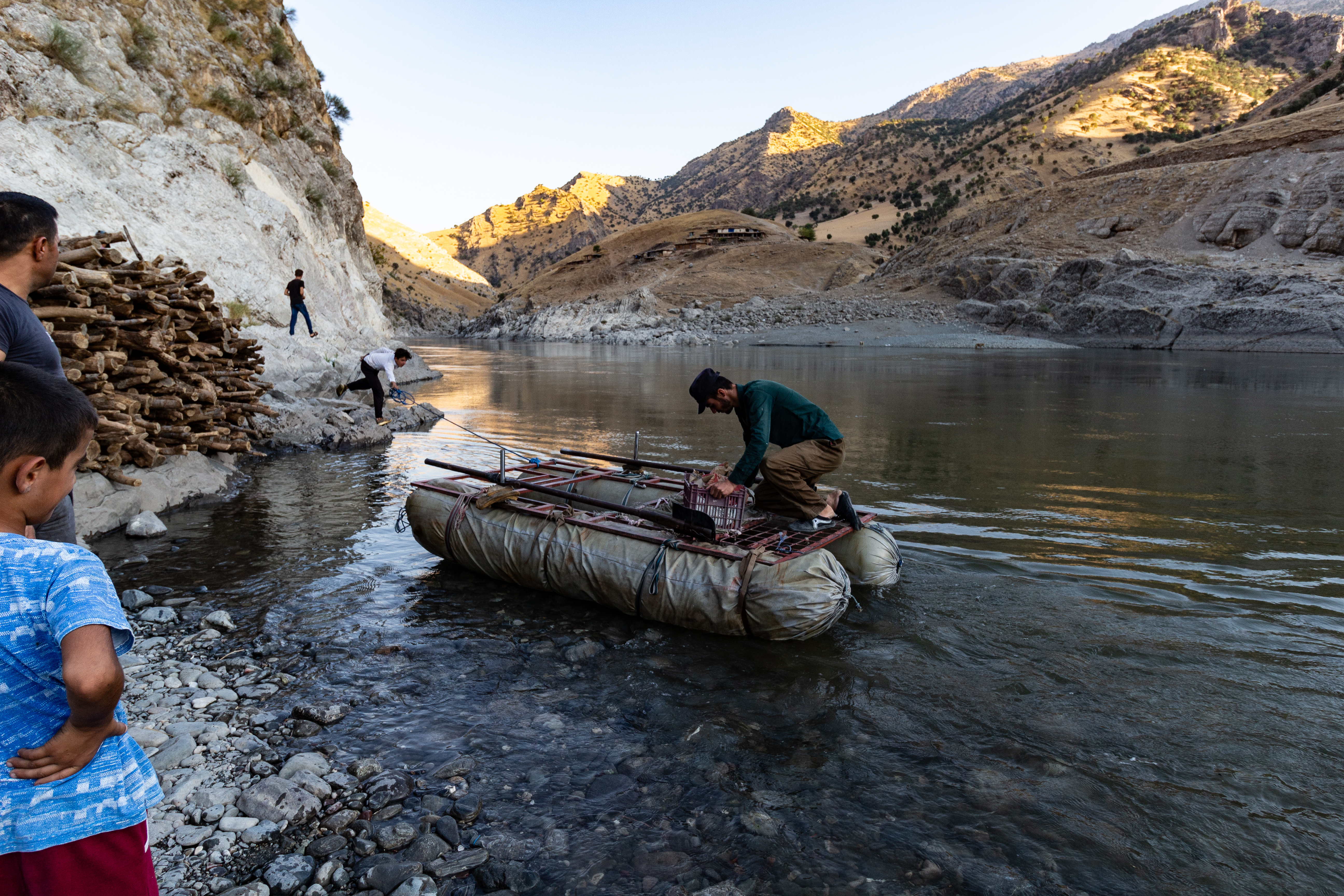
Today, the landscape the Lesser Zab runs through is scarred by decades of conflict. Landmines left from the 1980s Iran-Iraq war are marked by weather-beaten small triangular signs standing to crooked attention at the side of the road. A Turkish bombardment, aimed at armed Kurdish groups based in the mountains, set fire to a hillside a week earlier, leaving it charred black and dotted with withered trees, a wound on a vista that glows gold with late summer’s dry grasses.
The Lesser Zab’s volume has been declining for years. A 2019 study published in the scientific journal Hydrology analyzed data from 1964 to 2013 and found that annually the flow of water has decreased by an average of 1.912 cubic metres. Less rainfall and the construction of dams are to blame, the study concluded.
Iran began construction on the Sardasht Dam in 2011. It sits on the Lesser Zab in Iran’s Western Azerbaijan province, roughly 20 kilometres upstream of the border. The dam will not only generate electricity, but river water will be redirected to save a shrunken Lake Urmia.
The largest saltwater lake in the world, Urmia almost completely disappeared because of overuse and global warming. Reviving the lake was a campaign promise of President Hassan Rouhani. In 2013, Tehran partnered with the United Nations Development Programme (UNDP) in an ambitious plan to rescue the lake and, after heavy rainfall last year broke a drought, officials announced the lake was on the way to recovery.
But saving Lake Urmia spells death downstream in the Kurdistan Region.
On the banks of the Lesser Zab near Qaladze, farms are squeezed in between gravel mines. Bright red and yellow clothing of workers dot a green field. A forgotten pair of orange gloves wave from the top of an okra plant. A group of teenage girls run giggling to hide among fig trees as we approach, chased by waddling ducks.
In the cool shade of a mulberry tree, we snack on crunchy raw okra and sweet figs warmed by the sun. One of the girls, Surusht Khalid, comes out from her hiding place behind the trees with a guard dog – a waist-high black Kurdish mastiff called a pshdar.
“I love the work,” said the 16-year-old high school student, a blue headscarf wrapped around her tanned face. “Everyday is a picnic,” she said, grinning at her father who chuckles. He’s a Peshmerga and spends most of his days soldiering. On his days off, his daughter drags him into the fields to work with her.
It’s mid-morning and Surusht has been working for six hours. She’s full of energy, teasing her younger brother who cradles a chicken in his arms. It was given to him as a gift and he was reluctant to put it down.
Surusht has worked on the farm for two years. During a government-imposed lockdown to limit spread of the COVID-19 virus earlier this year, Surusht said she suffered, cooped up at home for weeks. “Being outdoors is healthier.”
Her family is one of two jointly farming this plot of land. They have fig trees, 1,000 chickens, ducks, a fish farm, and fields where they plant okra one year and wheat the next. This year, they lost half their okra crop. It dried up.
“Iran has built a dam and we are paying the consequence for that,” said Surusht, her smile fading.
“This is going to kill us as farmers,” said her father, Khalid Qadir Hussein, as his daughter kicks at the dust at her feet, seeing her dreams of a life working the land wither away.
This region was the birthplace of the Kurdish revolution and political parties that have risen to the halls of power and an international stage. Now, when the farmers go to those parties to ask for help, they only get empty words, said Hussein. “They lie.” The farmers have been waiting years for the authorities to follow through on a promise to develop water infrastructure in the area.
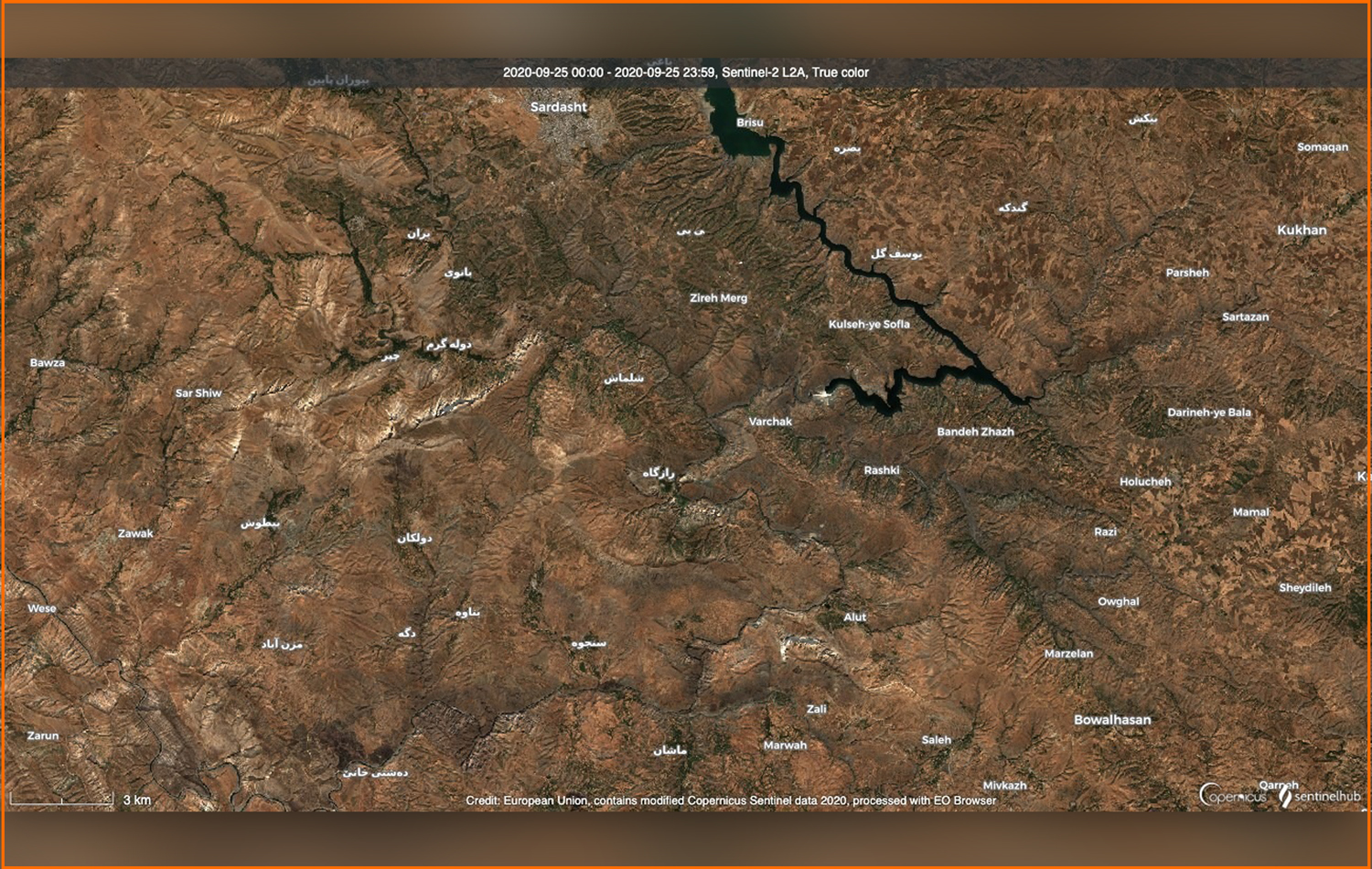
THERE’S an old Kurdish saying about unlucky people. If he goes to the banks of the Sirwan, he has to bring a jug of water with him. For an unfortunate person, even the mighty Sirwan River runs dry. Today, all of the Kurdistan Region and Iraq are unlucky.
The Sirwan River played a major role in human evolution. The biodiversity found along its waterways, mountains, and plains allowed humans to make major steps in cultivating plants and domesticating animals. In Iran, stone tools made by Neanderthals were found in a cave. “So 60,000 years ago, people lived on the banks of the Sirwan River,” said archaeologist Dlshad Zamua.
In the Kurdistan Region, the river irrigates the Shahrizur plain, making it a fertile area that has been inhabited since the neolithic period. It is home to more than 500 possible archaeological sites recently revealed through satellite imagery. The oldest known inhabited site, Bestansur, dates back to 9,500 BC. Its discovery just over a decade ago altered our understanding of the neolithic period and the transition humans made from hunter-gatherer to sedentary agriculture.
There is evidence of humans moving out of living in caves to form communities around agriculture at the foot of the Zagros Mountains and the Shahrizur plain, explained Zamua. The first people to cultivate plants were women who noticed seeds growing from fruit tossed on the ground near their caves. They began to grow crops in the valleys and on the plains, in fields watered by rain and groundwater. The people then moved to be close to their farms, building villages.
The agricultural knowledge gained on the banks of the Sirwan was brought south as people migrated. And in Mesopotamia, modern day southern Iraq, where the soil is dryer and the terrain flatter, people developed irrigation to water their crops and large-scale agriculture was born.
On August 13, 2020, Iran took full control of the Sirwan River. President Hassan Rouhani inaugurated a major water project that will eventually irrigate 35,000 hectares of farmland in the border areas of Kermanshah and Ilam provinces by the end of this year. Developing agriculture in this region has been a dream of Tehran for decades, said Rouhani.
The Iranian government for years sought to be self-sufficient in its food production, an ambitious goal for a nation that is largely arid or semi-arid. The agriculture sector uses an astounding 90 percent of Iran’s freshwater resources. Despite decreasing water supplies from overuse and climate change, Iran has expanded its agriculture sector, concluded a recent study published in the journal Earth’s Future. “This expansion was facilitated by the excessive use of nonrenewable water resources which has significant environmental and socioeconomic implications,” the authors stated.
Solving its own water crisis and securing its agriculture sector holds urgency for Iran under crippling American sanctions that have devastated the economy and shackled Tehran’s ability to trade. Its plans do not include giving its neighbour a heads up when it decides to turn off the tap on the Lesser Zab and Sirwan Rivers.
The project Rouhani opened in August includes controlling the Sirwan River using Daryan Dam. “Dams are a great barrier against floods and provide security for people’s lives,” he said. In his time in office alone, 24 dams have been built in this area. Construction of Daryan Dam began in 2009. It will provide 210 megawatts of electricity and water fields 400 kilometres away.
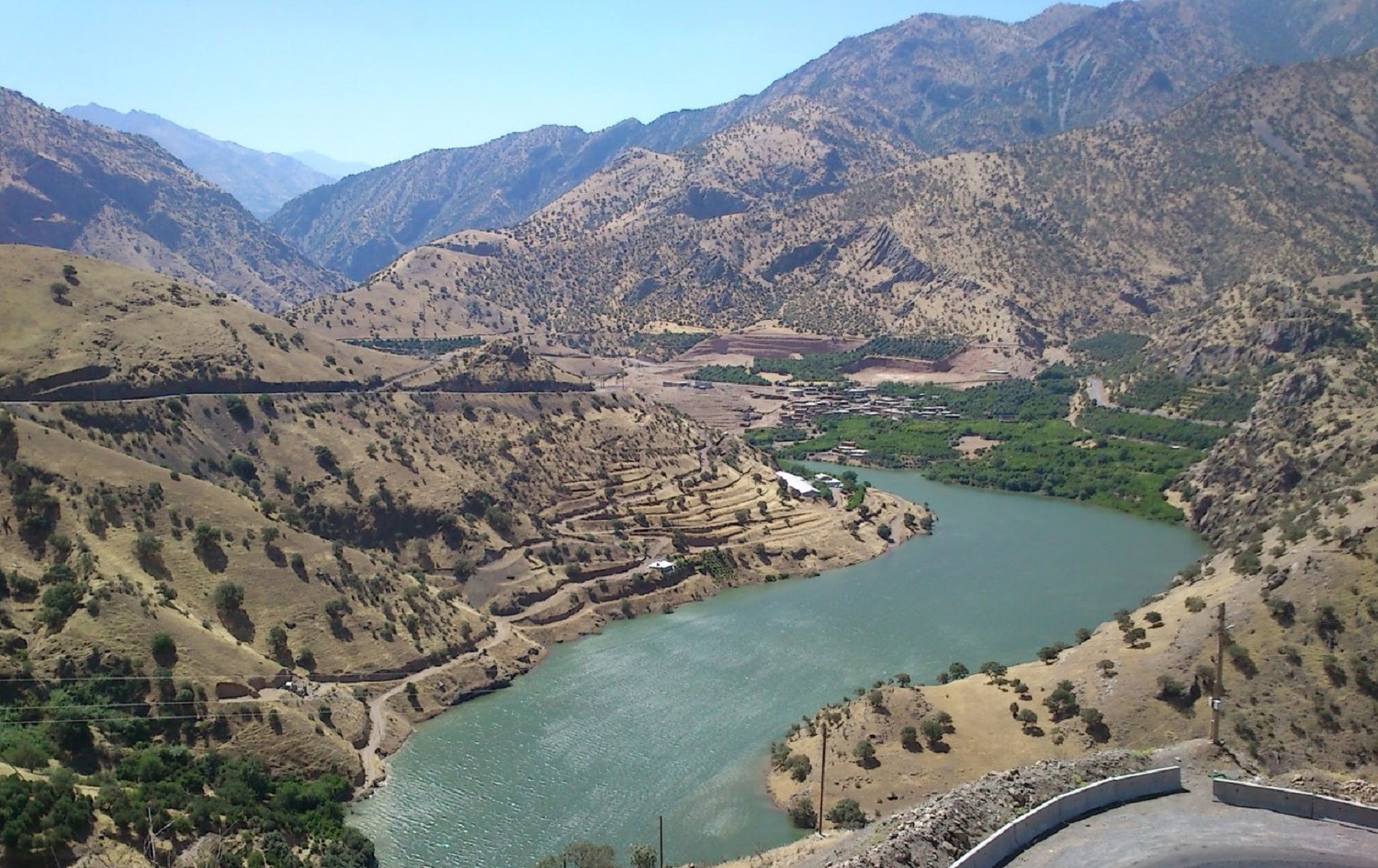
The river’s flow is cut with no warning to the Iraqis. Border guards and fishermen in the Kurdistan Region say that over the course of a whole week in late September, the water flowed only for an hour.
“Iran is cutting the water because they are implementing many projects, dams, irrigation, additionally they are making canals diverting water to inside Iran… so of course they don’t inform the Iraqi side,” said member of the Iraqi parliament Mohammed Amin Faris, who sits on the parliament’s water committee.
Three fishing lines drift in the calm water of the Sirwan, closely watched by Hunar Mohammed Abdullah, crouched on the river bank. He pulls a line in to check the bait, deciding to replace it with a new piece of bread dough that he molds around the hook. He stands up, whips the hook round and round in the air, and tosses it with a lunge. It whistles before landing in the river with a small splash. Hunar secures the line on a stick jammed into the river bank and turns his attention to a second line. Pulls it in, adjusts the bait, and throws it back into the water. He sits back and watches. The hot sun beats down and a fly buzzes.
“Fishing is the most beautiful thing. You come down to the stream and watch the river,” Hunar said. He calls it therapy.
A butterfly flits by as one line catches his attention. It’s jerking in the water. He picks it up and teases it – pull and release, pull and release – until he gives a tug and a flash of silver flies through the air. A fish. Hunar smiles. He takes it off the line, puts it into a bag he has submerged in the water, rebaits the hook, and tosses it back into the river. He lights a cigarette and sits back.
“Of course, it’s the end of our life if we lose this water,” he said.
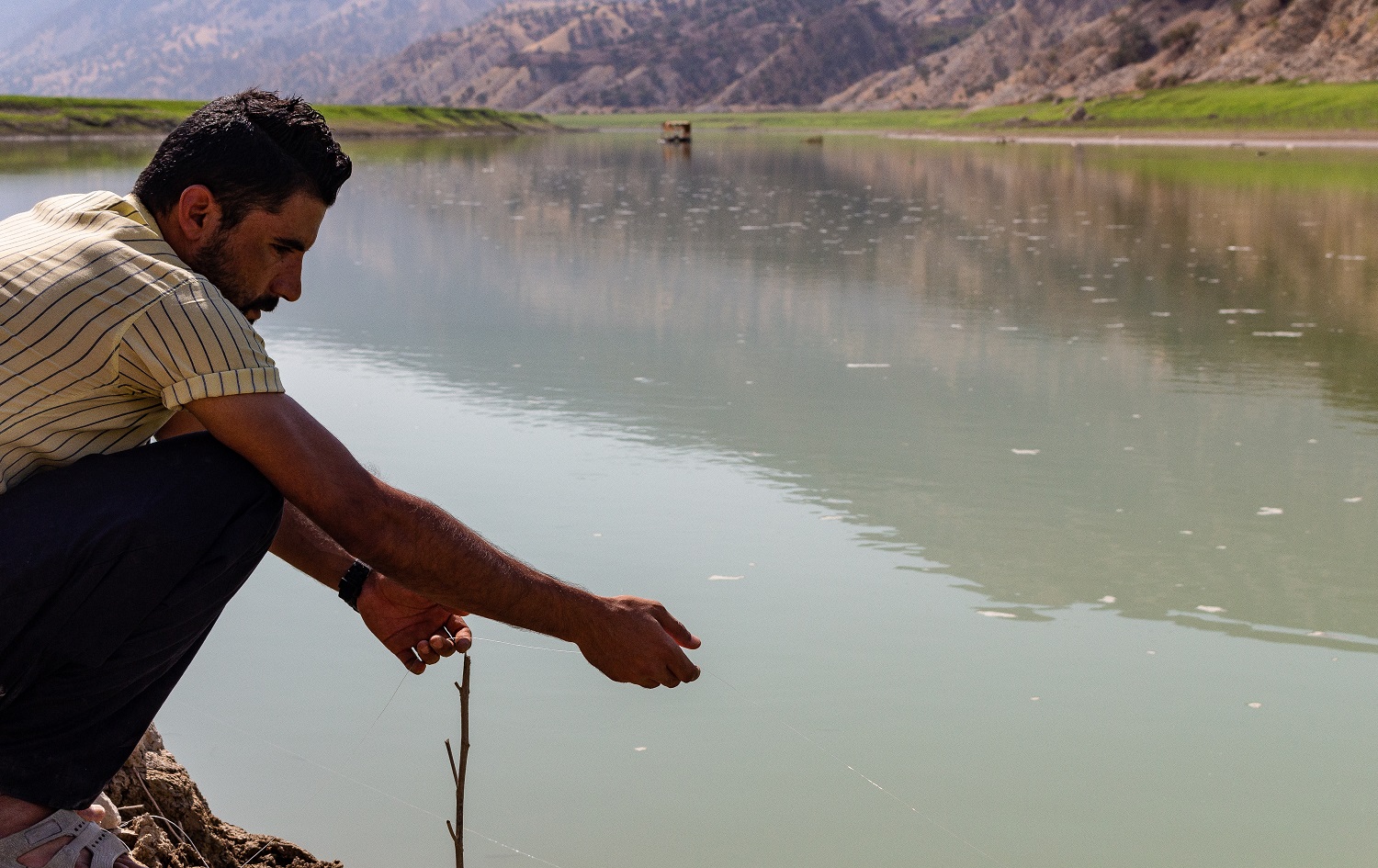
Hunar and his brother Satar have been fishing at this spot for years, but they don’t come here often anymore. The water in the Sirwan River is stagnant. “It doesn’t flow at all,” said Hunar. “Even in the dry season, it’s never been this low… this year is not normal.”
How do the fish taste? “Like shit,” said Satar, gesturing to the stream. “You can see that this water is not healthy,” Hunar points out. It’s green with algae.
The brothers also see another problem. Dark, murky water carrying garbage is floating upstream. With little current in the Sirwan, the heavily polluted waters of another river, the Tanjero, are taking over.
THREE rivers feed the reservoir at Darbandikhan dam, which provides drinking and irrigation water for the area – the Sirwan, Tanjero, and Sarchinar. With water levels at seasonal lows, coupled with Iran cutting the Sirwan, “Now only the Tanjero makes it to the dam, but it is not water, it is sewage and waste,” said Nabil Musa, environmental activist and member of the global Waterkeepers Alliance. “This is a disaster.”
Like rivers across the Kurdistan Region and Iraq, the Tanjero is abused, pumped full of sewage, industrial waste and trash.
South of the town of Said Sadiq, the Tanjero broadens where it flows across a plain. The water is a putrid brown. A Euphrates Softshell Turtle, an endangered species that lives in these waterways, quickly disappears from sight, diving into the cloudy depths. A dozen dead fish are floating nearby. Mass fish die-offs happen most years because of the severe pollution.
Cleaning up the Tanjero is not a priority for the Kurdistan Regional Government (KRG). “We don’t have to worry about it,” said Hussen H.K. Rahim, general director of horticulture, forests, and rangeland for the KRG’s Ministry of Agriculture and Water Resources. He acknowledged that polluted waters are flowing into Darbandikhan, but says the water is filtered and treated before it’s sent into our kitchens.
“There is a plan” to build water treatment plants in cities across the country, said the MP Faris, who was previously general director of water resources for the KRG, but it is on hold because of a financial crisis that has left Baghdad with empty pockets and a growing deficit.
Management problems and political instability don’t help. “The people who are responsible for the water sector, they’re changing… that’s the problem,” said Faris. Technicians and negotiating teams have changed with each new government (there have been three in as many years), dashing any hopes of a consistent policy with follow-through.
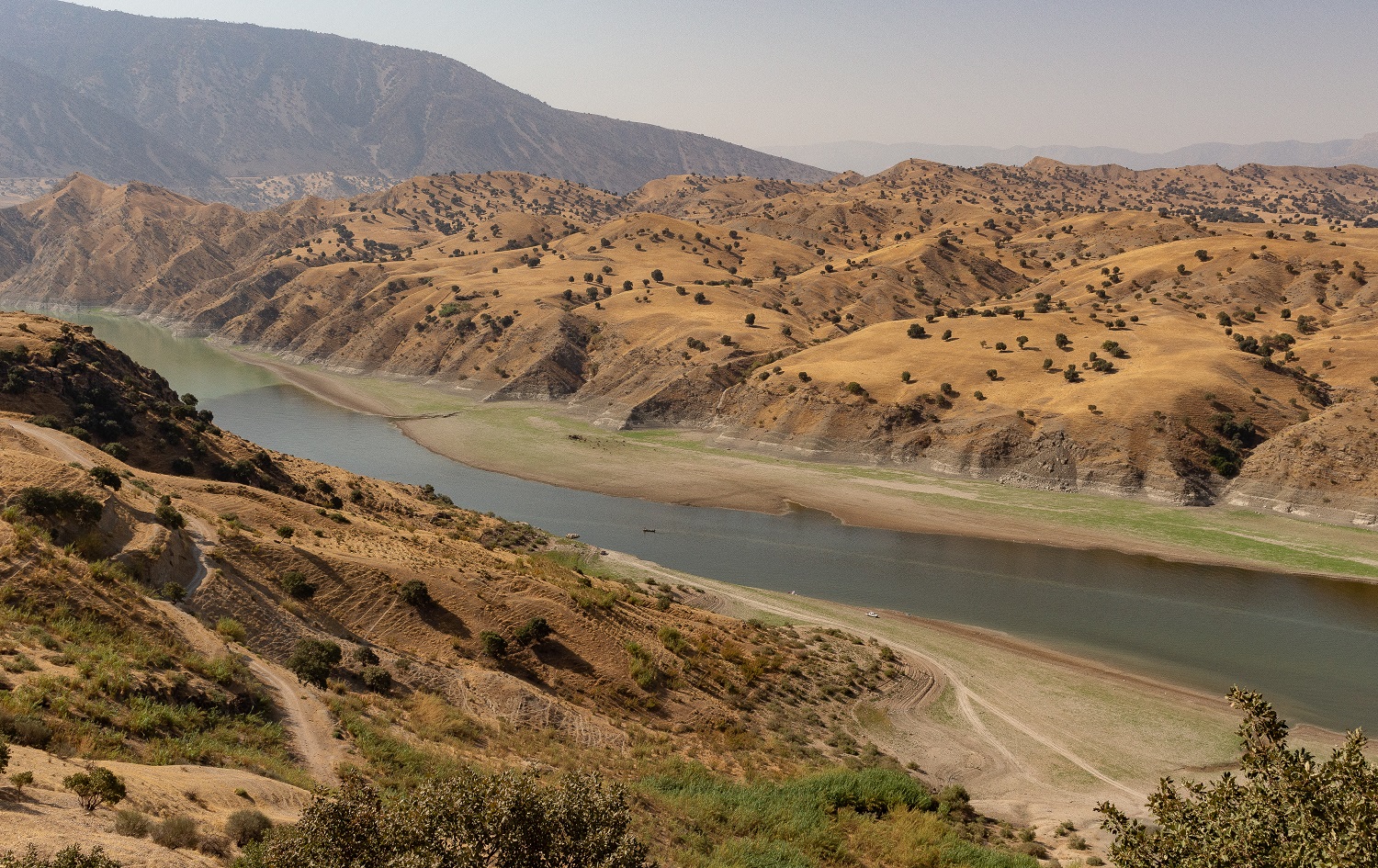
At an Iraqi border post on the Lesser Zab, across the valley from their Iranian counterparts, the guards watch the river. For the past two weeks, Iran has cut the water flow, only releasing some in the mornings. The guards send daily reports to their superiors, but they don’t know what happens to the information they pass along.
“As much as we need the water as Kurds, the Iraqis need it two times more,” said one guard, speaking on condition of anonymity. The Iraqi government should be the one to solve the problem because it faces a more severe water crisis than the Kurdistan Region, he argued, but does not hold out hope.
“I don’t foresee any negotiations, because Iran has a long-term plan.”
All of Iraq will feel the effect of water shortages caused by Iran’s dams. In the south, water shortages and poor water quality are already creating climate refugees. Rural families are relocating to urban centres as their fields dry out or salt over, found a February 2020 report by three organizations: the Internal Displacement Monitoring Centre (IDMC), Social Inquiry, and the Norwegian Refugee Council (NRC).
Baghdad is in talks with Tehran over their shared water resources, but is not making progress. “We tried to negotiate with the Iranian side, and we are still trying. But there’s no response from the other side,” said MP Faris. “Negotiations are not so easy.”
An international agreement over shared water resources is the responsibility of the federal government, though delegates from the KRG take part in the talks and Erbil has raised the issue with the Iranian consulate, who promises to “take it into consideration and convey concerns to the relevant authorities,” said Rahim. “They keep emphasizing that there is a joint committee between Iraq and Iran. They say they have the right to do it especially in the months of July and August because they need water in these months.”
Doing what it can to hold onto the water within the borders, the KRG’s solution is to build more dams of its own -- small and medium sized levees on rivers across the Region, including the Lesser Zab and Sirwan. But funding for these projects was cut off during the financial crisis that began in 2014, and work has stopped on some 19 dams, as well as more that were in the research and design phases, explained Rahim.
Some of those dams would, however, be rendered useless if an agreement cannot be reached with Tehran. “If Iran continues to build dams, they will significantly impact dams on our side,” said Rahim, pointing out that the fate of the rivers is out of Erbil’s control. “You know that the dams and water, according to the constitution, is related to the Iraqi government."
Baghdad and Erbil are essentially paralyzed and powerless to act in the face of Tehran’s determination, while the people who depend on the waters of the Lesser Zab and Sirwan watch their lives drain away.
The village of Mashan sits on the Lesser Zab just across the border from Iran. Arakan Sidiq, 26, is a shepherd and teacher here. When he was a child, the river was high and the villagers would fish using a masha, a wooden cage with an open top that they would place under the whitewater to trap fish. Some nights they would catch 200 kilograms of fish. Villagers can still fish the river during the day – Iran doesn’t mind that, he says. But the fish are too few in number and the water too low to use the masha anymore, and if they approach the river at night, the border guards might open fire.
Tall, wearing traditional Kurdish clothing with bare feet shoved into leather shoes, Sidiq looks sadly at the river. As we talk, the noise of the water starts to grow. What had been a mere trickle speeds up and deepens. Whitewater foams as it crashes over rocks. Iran has released the water. Sidiq said they never know when this will happen or for how long. They live at the whim of their neighbour. The KRG, said Sidiq, has “no diplomatic power, so Iran is free to do what it wants.”
“We have become sheep without a shepherd,” he said, walking off to tend to his small flock.
Editing by Shahla Omar








Comments
Rudaw moderates all comments submitted on our website. We welcome comments which are relevant to the article and encourage further discussion about the issues that matter to you. We also welcome constructive criticism about Rudaw.
To be approved for publication, however, your comments must meet our community guidelines.
We will not tolerate the following: profanity, threats, personal attacks, vulgarity, abuse (such as sexism, racism, homophobia or xenophobia), or commercial or personal promotion.
Comments that do not meet our guidelines will be rejected. Comments are not edited – they are either approved or rejected.
Post a comment